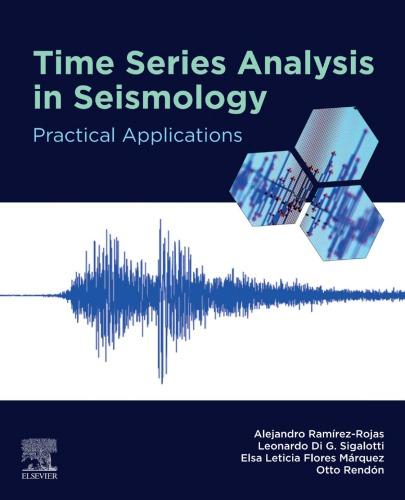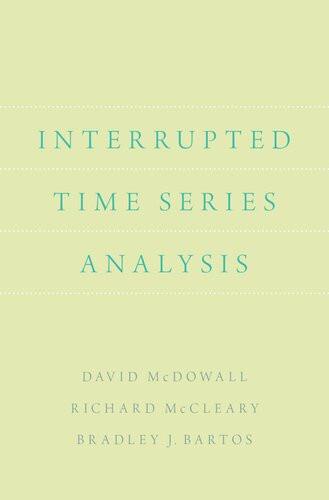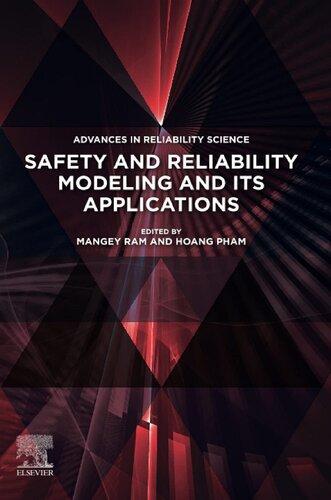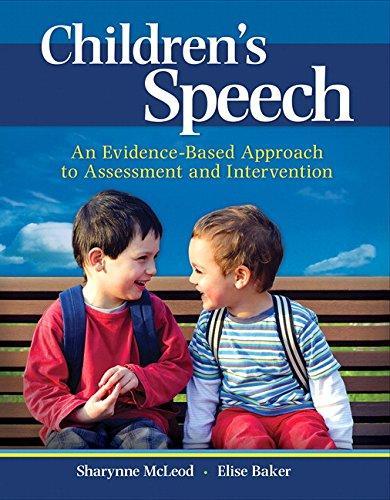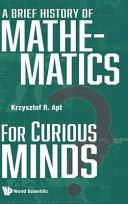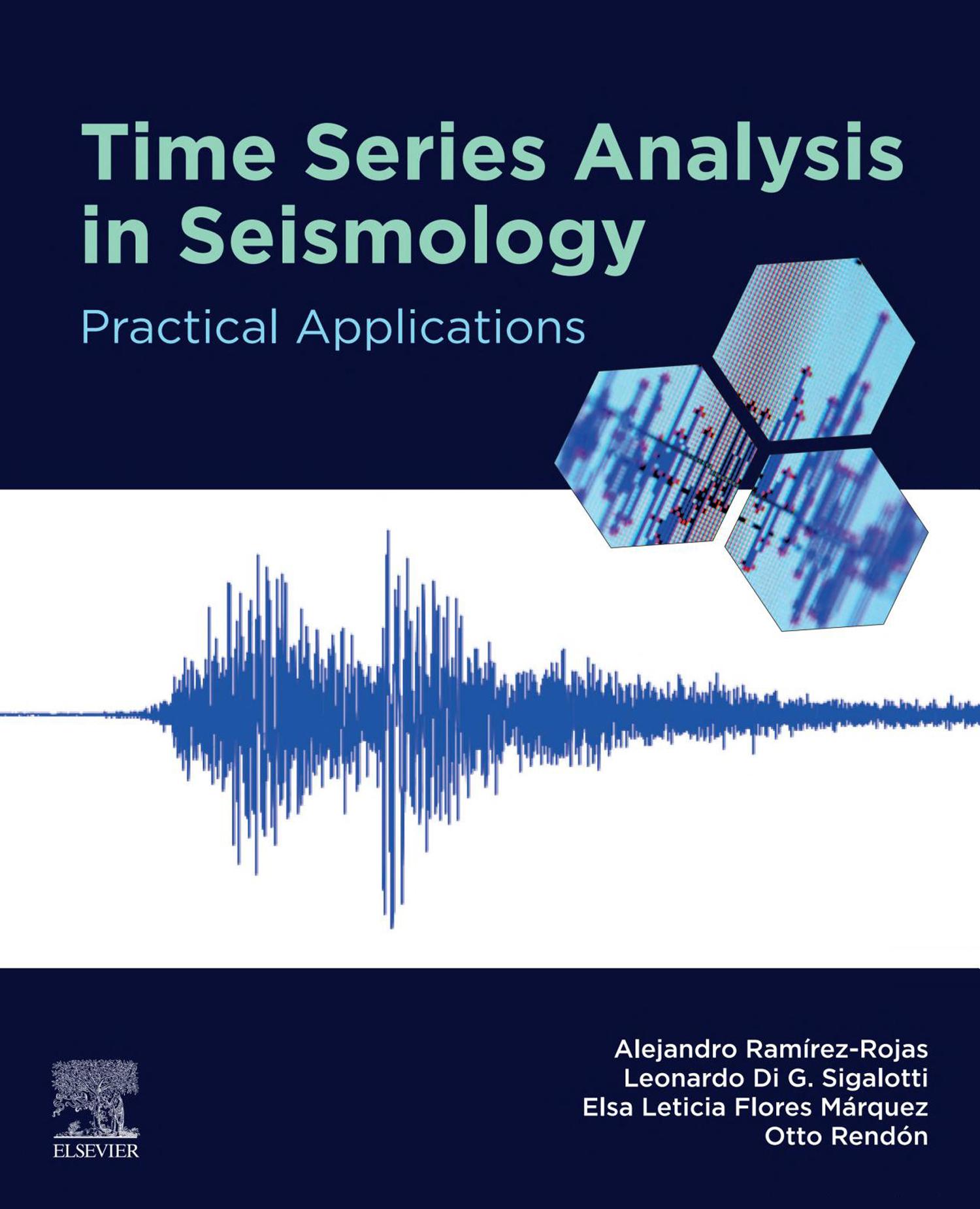https://ebookmass.com/product/time-series-analysis-in-
Instant digital products (PDF, ePub, MOBI) ready for you
Download now and discover formats that fit your needs...
Interrupted Time Series Analysis David Mcdowall https://ebookmass.com/product/interrupted-time-series-analysis-davidmcdowall/
ebookmass.com
Applied Time Series Analysis. A Practical Guide to Modeling and Forecasting Terence C. Mills
https://ebookmass.com/product/applied-time-series-analysis-apractical-guide-to-modeling-and-forecasting-terence-c-mills/
ebookmass.com
Safety and Reliability Modeling and Its Applications (Advances in Reliability Science) 1st Edition Mangey Ram (Editor)
https://ebookmass.com/product/safety-and-reliability-modeling-and-itsapplications-advances-in-reliability-science-1st-edition-mangey-rameditor/
ebookmass.com
Bratva Babygirl (Dark and Ruthless Book 3) Kiley Beckett
https://ebookmass.com/product/bratva-babygirl-dark-and-ruthlessbook-3-kiley-beckett/
ebookmass.com
Modernity, Development and Decolonization of Knowledge in Central Asia: Kazakhstan as a Foreign Aid Provider Nafissa Insebayeva
https://ebookmass.com/product/modernity-development-anddecolonization-of-knowledge-in-central-asia-kazakhstan-as-a-foreignaid-provider-nafissa-insebayeva/
ebookmass.com
Children’s Speech: An Evidence-Based
Approach to Assessment and Intervention
https://ebookmass.com/product/childrens-speech-an-evidence-basedapproach-to-assessment-and-intervention/
ebookmass.com
Pretty Dependable (Pine Village Book 2) Lacey Black https://ebookmass.com/product/pretty-dependable-pine-villagebook-2-lacey-black/
ebookmass.com
ECNi Le Tout-en-un Alexandre Somogyi
https://ebookmass.com/product/ecni-le-tout-en-un-alexandre-somogyi/
ebookmass.com
3D Printing: A Revolutionary Process for Industry Applications Richard Sheng
https://ebookmass.com/product/3d-printing-a-revolutionary-process-forindustry-applications-richard-sheng/
ebookmass.com
A R Apt
https://ebookmass.com/product/a-brief-history-of-mathematics-forcurious-minds-krzysztof-r-apt/
ebookmass.com
TimeSeriesAnalysisinSeismology PracticalApplications AlejandroRamírez-Rojas
UniversidadAutónomaMetropolitana DepartamentodeCienciasBásicas MexicoCity,Mexico
LeonardoDiG.Sigalotti
UniversidadAutónomaMetropolitana DepartamentodeCienciasBásicas MexicoCity,Mexico
ElsaLeticiaFloresMárquez
InstitutodeGeofísica–UNAM DepartamentodeGeomagnetismoyExploraciónGeofísica MexicoCity,Mexico OttoRendón
InstitutoVenezolanodeInvestigacionesCientíficas,IVIC SanAntoniodeLosAltos,EstadoMiranda,Venezuela
Elsevier
Radarweg29,POBox211,1000AEAmsterdam,Netherlands
TheBoulevard,LangfordLane,Kidlington,OxfordOX51GB,UnitedKingdom 50HampshireStreet,5thFloor,Cambridge,MA02139,UnitedStates
Copyright©2019ElsevierInc.Allrightsreserved.
Nopartofthispublicationmaybereproducedortransmittedinanyformorbyanymeans,electronicormechanical,including photocopying,recording,oranyinformationstorageandretrievalsystem,withoutpermissioninwritingfromthepublisher. Detailsonhowtoseekpermission,furtherinformationaboutthePublisher’spermissionspoliciesandourarrangementswith organizationssuchastheCopyrightClearanceCenterandtheCopyrightLicensingAgency,canbefoundatourwebsite: www.elsevier.com/permissions.
ThisbookandtheindividualcontributionscontainedinitareprotectedundercopyrightbythePublisher(otherthanasmaybe notedherein).
Notices
Knowledgeandbestpracticeinthisfieldareconstantlychanging.Asnewresearchandexperiencebroadenourunderstanding, changesinresearchmethods,professionalpractices,ormedicaltreatmentmaybecomenecessary.
Practitionersandresearchersmustalwaysrelyontheirownexperienceandknowledgeinevaluatingandusingany information,methods,compounds,orexperimentsdescribedherein.Inusingsuchinformationormethodstheyshouldbe mindfuloftheirownsafetyandthesafetyofothers,includingpartiesforwhomtheyhaveaprofessionalresponsibility.
Tothefullestextentofthelaw,neitherthePublishernortheauthors,contributors,oreditors,assumeanyliabilityforanyinjury and/ordamagetopersonsorpropertyasamatterofproductsliability,negligenceorotherwise,orfromanyuseoroperationof anymethods,products,instructions,orideascontainedinthematerialherein.
LibraryofCongressCataloging-in-PublicationData
AcatalogrecordforthisbookisavailablefromtheLibraryofCongress
BritishLibraryCataloguing-in-PublicationData
AcataloguerecordforthisbookisavailablefromtheBritishLibrary
ISBN:978-0-12-814901-0
ForinformationonallElsevierpublications visitourwebsiteat https://www.elsevier.com/books-and-journals
Publisher: CandiceJanco
AcquisitionEditor: AmyShapiro
EditorialProjectManager: MichelleFisher
ProductionProjectManager: VigneshTamil
Designer: MarkRogers
TypesetbyVTeX
1.3Seismogenicregions:subduction,dispersion,andtriplepoint......
1.8.1TheSOCmodel..........................................................14
1.8.2Stick–slipandspring–blockmodels.....................................15
Chapter2:Stochasticprocesses...................................................21 2.1Backgroundonprobabilitytheory...
2.1.1Eventsandprobabilities..
2.1.4Randomvariablesanddistributionfunctions...........................27
2.1.5Statisticalmomentsandfrequentlyusedparameters...................30
2.1.6Marginalandconditionaldistributions..................................33
2.1.7Transformationofmulti-dimensionalrandomvariables...............35
2.1.8Characteristicfunctions..................................................36
2.1.9Lawoflargenumbers....................................................37
2.1.10Thecentrallimittheorem................................................38
2.2Discreteprobabilitydistributions
2.5Stationaryandevolutionarystochasticprocesses.
3.1Basicpropertiesoftimeseries.
3.4Self-affinityandfractaltimeseries..
3.5Hurstexponent... ..............................................................107
3.6Higuchimethod................................................................110
3.7Detrendedfluctuationanalysis(DFA).........................................112
3.8Multifractaldetrendedfluctuationanalysis(MFDFA).
3.9Pointprocesses...
3.9.1Representationsofpointprocesses......................................120
3.9.2TheFanofactor...........................................................122
3.9.3TheAllanfactor..........................................................123
3.10Someapplicationstoseismology..............................................124 3.11Problems........................................................................132
Chapter4:Non-extensivestatisticsintimeseries:Tsallistheory...................139
4.1Methodofmaximumentropy:statisticalphysicswithextensiveentropy...141
4.1.1Themethodofthemostprobabledistribution..........................142
4.1.2Entropyintheclassicaltheoryofinformation..........................143
4.2TheBoltzmann–Gibbs–Shannonentropyinseismology........ .............147
4.2.1Asimplestatisticalmechanicalmodel..................................152
4.3Non-extensivestatisticalmechanics...........................................154
4.4TheSotolongo-CostaandPosadas’model. ...................................158
4.5 q -Statisticaltheoryappliedtoearthquakes ...................................163
4.5.1Spatio-temporaldescriptionofseismicity...............................164
4.5.2Fault-sizedistribution....................................................168
4.5.3Platetectonicsasacaseofnon-extensivethermodynamics............170
4.5.4Experimentalseismology................................................172
4.6Analysisoftimeseriesandsignals............................................173
4.6.1Symbolicdynamics ......................................................173
4.6.2Dynamicalblockentropy................................................174
4.6.3 T -entropy.................................................................175
4.6.4Dynamicalcomplexityin Dst timeseriesusingnon-extensiveTsallis entropy....................................................................176
4.6.5Tsallis q -triplet...........................................................177 4.7Problems........................................................................180
Chapter5:Naturaltimeanalysis.................................................191
5.1Naturaltimeanalysis...........................................................192
5.2Timereversalinnaturaltime..................................................196
5.3Entropyinnaturaltime........................................................198
5.4Entropyinnaturaltimeundertimereversal
5.5Someapplications..............................................................203
5.5.1TheVANmethodofearthquakeprediction.............................203
5.5.2SESandearthquakes.
5.6Problems........................................................................209
Chapter6:Visibilitygraphanalysis...............................................213
6.1Basicpropertiesofgraphtheory
6.2Timeseriesandgraphs:visibilitygraph..
6.3Horizontalvisibilitygraphs...
6.4Topologicalpropertiesofhorizontalvisibilitygraphs..
6.5Directedhorizontalvisibilitygraphs
6.6Timeseriesreversibility
6.6.1PropertiesoftheKullback–Leiblerdivergence.........................238
6.6.2Aclassicalexample......................................................239
6.7Applicationstoseismology....................................................240
6.8Problems........................................................................246
Chapter7:Multiscaleanalysisintimeseries......................................251
7.1Approximateentropy(ApEn).................................................252 7.2ApEnandanalytics............................................................255
7.4Multiscaleentropy(MSE)
7.5AnalyticalderivationsofMSE................................................260
7.6MSEanalysisforwhiteand1
7.7Compositemultiscaleentropy
7.8Applicationstoseismology....................................................268
7.8.1Electroseismictimeseries...............................................268 7.8.2Earthquaketimedistributions...
Chapter8:Complexitymeasures.................................................275
8.1Astatisticalmeasureofcomplexity.
8.1.1Shannoninformation
8.2Complexitymeasuresbasedonentropyinnaturaltime.
8.2.1Complexitymeasuresbasedon
8.2.2Complexitymeasuresbasedon S .....................................285
8.2.3ApplicationtotheOlami–Feder–Christensenearthquakemodel......286
8.2.4Applicationstorealearthquakes. ........................................288
8.3Complexityofseismicprocesses ..............................................294
8.3.1Theoryofeffectivemedia................................................295
8.3.2Fractalmedia.............................................................297
8.3.3Phasespaceportraits.....................................................297
8.3.4Percolationtheoryandfracture..........................................300
8.3.5Strain-sensitivityandnonregularityofpredictors......................301
8.4Dynamiccomplexityandtimeseries..........................................303
8.5Complexityandartificialcontrolofnonlinearstructureofseismic/acoustic regime...........................................................................307
8.6Earthquakeforecastandcriticalphenomena ..................................309
8.7Seismologicalmeasurementsandtheuseoftrainedneuralnetworks
8.7.1Earthquakenetworks .....................................................313
8.7.2Neuralnetworkapproachforanalyzingseismicdata...................318
8.7.3Locatingearthquakeswithanetworkofseismicstations..............321
8.7.4Automaticclassificationofseismicevents..............................322
8.7.5Neuralnetworkapproachtothepredictionofseismicevents..........323
8.8Forensicseismologyandthenucleartest-bantreaty.........................324 8.9Problems........................................................................326
Listoffigures Fig.1.1Mapofworldseismicity.Theblackstripsshowtheregionsofrealearthquake actioninabout10years.Figuremodifiedfrom[10]. 3
Fig.1.2Mapoftectonicplatesmovement.Thearrowsindicatethedirectionofmotionof thetectonicplates.Figuremodifiedfrom[10]. 5
Fig.1.3Schematicsectionofasubductionzoneshowingthedynamicsofcollisionbetween anoceanandacontinentalplate. 7
Fig.1.4UnscaledschematicsketchoftheWadati–Benioffzone,illustratingthe environmentofdeepseismicity. 8
Fig.1.5Schematicofanearthquakeinitiatingatsunami. 9
Fig.1.6Schematicofthepilesandmodel. 14
Fig.1.7Sketchofthespring–blockmodel. 16
Fig.1.8Instabilityprocessinthestick–slipmodel.(A)Spring–blocksystemwithroughness, where F istheHookeforceand Ff isthefrictionforce.(B)Representationofthe instability.As F increases, Ff dominates,while v 0 until F Ff asathreshold valueandsotheblockslipsfrom B to C .Theslopeofthesolidredlinedefinesthe valueofthespringconstant K .17
Fig.2.1Twosets A and B .24
Fig.2.2Exampleofacumulativedistributionfunction. 28
Fig.2.3Theprobabilitydensityfunction f(x).30
Fig.2.4Maincharacteristicsoftheautocorrelationfunction RX (τ).68
Fig.2.5Propertiesofthecross-correlationfunction RXY (τ).69
Fig.2.6Theimpulseresponsefunction. 73
Fig.2.7Exampleofanamplitudemodulatingfunction. 75
Fig.2.8Exampleofanaveragedsmoothedearthquakeamplitudespectrum. 77
Fig.2.9Anamplitudeenvelopefunction.Figuretakenfrom[47]. 80
Fig.2.10Poissoninterarrivaltimes. 83
Fig.2.11Operationofanoff-onswitch. 83
Fig.3.1SatelliteimageofthreesimultaneoushurricanesthreatenCentralAmericaon September2007.Figuretakenfrom[1]. 88
Fig.3.2PhotographofatornadoinOklahomaonMay1999.Imagetakenfrom(http:// www.nssl.noaa.gov/headlines/dszpics.html). 88
Fig.3.3Classicalsolutionofasimpleharmonicoscillator. 91
Fig.3.4Segmentofthefunction sin(ωt) + .Thetimeseriesnowexhibitsfluctuating behavior.Althoughthefunctioniscontinuousoverallitsdomain,itisnot differentiable. 91
Listoffigures Fig.3.5PlotoftheMandelbrotset M inthecomplexplane[Re(c ), Im(c )].94
Fig.3.6Three-dimensionalvisualizationoftheLorenzattractor.95
Fig.3.7Three-dimensionalvisualizationoftheRösslerattractor.95
Fig.3.8Fractalexamplesinnature:(A)treeand(B)chamberednautilusshell.Images takenfrom(A: https://en.wikipedia.org/wiki/Fractal andB: https://commons. wikimedia.org/w/index.php?curid=19711).96
Fig.3.9(A)Crystallizedwaterand(B)crystallizedhoneyformingrepeatedpatternsin snowflakes.Imagestakenfrom(A: https://commons.wikimedia.org/w/index. php?curid=22130 andB: https://commons.wikimedia.org/w/index.php?curid= 2208088). 97
Fig.3.10Flashoflightning,wherethestep-by-steppathlightningisrepeatedonsmallerand smallerscales.Imagetakenfrom(https://en.wikipedia.org/wiki/Lightning).97
Fig.3.11Vegetableinthefigure,knownas Romanescobroccoli,orcauliflower,isarelativeof morecommonbrassicasthathasastrikinglyfractalappearance.Theself-similar conicalprotrusionsarecomposedofspiralonspiraloftinybuds.Imagetaken from[17]. 98
Fig.3.12ExampleshowingtheGreatBritaincoastlineasmeasuredusinganincreased numberoflinesegments.Figuretakenfrom[19]. 99
Fig.3.13Dependenceof N on r fromtheexampleshowninFig. 3.12
Fig.3.14Computationalsimulationofatwo-dimensionalrandomwalk.
Fig.3.15ExampleofBrownianmotion.
Fig.3.16TherangeofHurstexponentsdefinesacontinuumoffractalstructuresbetween whitenoise(H = 0 5)andBrownnoise(H = 1 5).Thepinknoise(H = 1) separatesbetweenthenoiseswith H< 1 thathavemoreapparentfastevolving fluctuationsandrandomwalkswith H> 1 thathavemoreapparentslowevolving fluctuations.Figuretakenfrom[65].
104
Fig.3.17Powerspectrumfor(A)random,(B)persistent,and(C)anti-persistenttimeseries.107
Fig.3.18RelationshipbetweentheHurst H andspectral β exponentsfornoisesand motions.
108
Fig.3.19Exampleofwindowingwith τ = 200 datavaluesofthenewsubseries ξ(τ).108
Fig.3.20IntegratedtimeseriesaccordingtoEq.(3.40).Theverticallinesboundthe windowsofsize n = 50,andthesolidstraightlinesegments(blue)representthe “trend”estimatedineachwindowbyalinearleast-squaresfit. 112
Fig.3.21TypicalbehaviorofthefluctuationfunctiongivenbyEq.(3.47) foramono-fractal andmultifractaltimeseries. 117
Fig.3.22BehaviorofthegeneralizedHurstexponent h(q) foramono-fractaland multifractaltimeseries. 118
Fig.3.23(A)Behaviorof τ(q) foramono-fractalandmultifractaltimeseriesand (B)multifractalspectrum f(α) ofamono-fractalandmultifractalseries.118
Fig.3.24Representationsofapointprocess:(A)idealizedsequenceofeventsattimes t1 ,t2 ,... andintereventtimes τn = tn+1 tn ,(B)cumulativecountingprocess N(t),and(C)sequenceofcounts Zk (t) 121
Fig.3.25Multifractalspectraforthe(A)Irpinia,(B)Friuli,and(C)Marchetime series,whicharethreedifferentseismiczonesinItaly.Allthespectrashowa single-humpedshapetypicalofmultifractalsignals.Byinspection,thedifferences inshapebetweentheMarchespectraandtheIrpiniaandFriulispectraareclear fromthefigures.Figuretakenfrom[88].
Fig.3.26(A)Singularityspectrumforthewholeseismiccatalogueand p = 2 and(B)the samefortheaftershock-depletedseismiccatalogueand p = 2,correspondingto earthquakesoccurredfrom2003to2012intheKachchhareaofGurajat,western India.Figuretakenfrom[89].
128
129
Fig.3.27(A)GeneralizedHurstexponentsand(B)singularityspectraforfiveseismicregions onthesouthPacificcoastofMexico.Figuretakenfrom[90]. 129
Fig.3.28(A)GeneralizedHurstexponentsforthedeep(blacksquares)andshallow(red circles)cataloguesand(B)singularityspectrumforthedeep(blacksquares)and shallow(redcircles)catalogues,correspondingtoearthquakesequencesinthe Pannoniaregionfrom2002to2012.Figuretakenfrom[91].
Fig.3.29 q -OrderHurstexponentforthreesubsequencesbetween 10 and10for earthquakesoccurredinsouthernCaliforniabetween1999and2010.The dependenciesof Hq on q ofthreesubsequencesaretypicalofmultifractalsets. Figuretakenfrom[92]. 130
Fig.3.30Themultifractalspectrumofthreesubsequences:(A)micro-scalesubsequence, (B)mid-scalesubsequence,and(C)macro-scalesubsequenceforearthquakes occurredinsouthernCaliforniabetween1999and2010.Figuretakenfrom[92].131
Fig.3.31(A)VariationoftheAllanfactorexponent α withtheearthquakedepthand(B)the samefortheexponent d inthepower-lawrelation F(n) ∝ nd ascalculatedby thedetrendedfluctuationanalysisofsouthernCaliforniaseismicity.Figuretaken from[93].
Fig.3.32FigureofProblem6.
Fig.4.1Thegraphontheleftrepresentsauniformdistributionassociatedwithasituation ofmaximumentropyorminimalinformation, H = logb n,whileontheright thesituationcorrespondstothatofminimumentropy.Inthiscasethereisthe certainty(maximuminformation)ofreceivingonlythemessage Mj andhence H = 0.FiguremodifiedfromRef.[6].
Fig.4.2Frequency-magnitudedistributionsfromtwodifferenttectonicdatasets: (A)adiffuseplateboundarywithdistributedseismicity(easternMediterranean) and(B)aplateboundarywithdeformationconcentratedonasingle through-goingfault(southernCalifornia).Ineachplot,thesolidlineisthefitto thedatausingtheGammadistribution(4.33)with λ> 0 in(A)and λ = 0 in(B). Figuretakenfrom[13].
Fig.4.3(A)TemporalevolutionofearthquakemagnitudesduringtheL’Aquilaseismic sequenceand(B)numberofeventsineachmagnitudebin(whitecircles)and cumulativefrequency-magnitude(blackcircles)distributionsofeventsforall seismicevents.Thesolidlineoverthewhitecirclesdistributiongivestheoverall estimateof b .Theverticaldashedlinemarkstheestimatedminimummagnitude M0 forthecataloguecompleteness.Figuretakenfrom[44].
132
133
145
148
151
Listoffigures Fig.4.4Geometricmodelofthefault.Thearea A is Amax /A times Amax . A0 isalower boundoftheminimumenergyreleasedthatisimposedbyphysicalconsiderations anddependsonthespacingofinhomogeneityintheEarth’scrust.Figuretaken from[13].
Fig.4.5Schematicoftherelativemotionoftwoirregularfaultsinthepresenceof fragmentarymaterialfillingthespacebetweenthem.Therelativemotioncanbe hinderednotonlybytheoverlappingoftwoirregularitiesoftheprofiles,butalso bytheeventualrelativepositionofseveralfragmentsasshownbetweenpoints“a” and“b”.Figuretakenfrom[56].
Fig.4.6Dependenceoftherelativecumulativenumberofearthquakesonthemagnitude m ascalculatedusingEq.(4.86)(solidline).Thedatapoints(symbols)correspond toearthquakeseventsintheSamambaiafault,Brazilfor100eventsfromthe BulletinSeismicoftheRevistaBrasileiradeGeofísica(A);theNewMadridfault, USAfor173events(B);andtheAnatolianfault,Turkeyfor8980events(C)both fromtheNEICcatalogue.Figuretakenfrom[57].
Fig.4.7(A)Probabilitydistributionfunction(PDF)ofincremental“avalanche”sizes X , normalizedtothestandarddeviation σ ,fortheOlami–Feder–Christensenmodel onasmall-worldtopology(criticalstate,opencircles)andonaregularlattice (non-criticalstate;filledcircles).Thesolidlinecorrespondstoa q -Gaussian distributionfor q = 2 ± 0 1,whilethedashedlinedepictsaGaussiandistribution. (B)PDFofincrementalearthquakeenergiesfortheNorthernCaliforniaearthquake catalogue(opencircles)andthecorrespondingfitwiththe q -Gaussiandistribution (solidline)for q = 1.75 ± 0.15.TheGaussiandistribution(dashedline)isalso shownforcomparison.Figuretakenfrom[75].
Fig.4.8CumulativeintereventtimedistributionfortheAigionearthquakesequence.The solidlinedepictsthe qτ -exponentialdistributionforthevaluesof qτ = 1 58 ± 0 02 and τ = 0 025 ± 0 0003 days.The qτ -logarithmicdistribution lnq (P (>τ)), exhibitingacorrelationcoefficientof r =−0 9885 isshownintheinset.Figure takenfromRef.[70].
Fig.4.9Hazardfunction WM (T, T) ascalculatedfromEq.(4.89)versustheinterevent time T (indays)forearthquakemagnitudethresholds M ≥ Mc intheareaof Greece.Figuretakenfrom[70].
Fig.4.10Dependenceofthenormalizedprobabilitydensity p(τ ) ontherescaledinterevent times τ forvariousthresholdmagnitudes.Theblacksolidlinerepresentsthe q -gammadistribution,givenbyEq.(4.93),for C = 0.35, γ = 0.39, θ = 1.55, and q = 1.23.Thebluedashedlinerepresentsthegammadistributioncalculated fromEq.(4.92)with C = 0.35, γ = 0.39,and B = 1.97.Figuretakenfrom[19] (modifiedfromtheoriginalfigureofMichasetal.[66]).
153
159
162
164
165
166
168
Fig.4.11Numberofplateswithanareaequaltoorlargerthan A.Thecentraldashed blacklinerepresentsthepower-lawfit N(>A) ∝ A μ ,with μ ≈ 1/3 (usingdata from[92]).Theverticalarrowsmarkthelocationinthedataofthecross-over points Ac 1 ≈ 2 × 10 3 steradiansand Ac 2 ≈ 1 steradian.Figuretakenfrom[91].171
Fig.5.1Schematicshowinganumberofpointprocessesmappedinnaturaltime.193
Fig.5.2Exampleofadichotomoussignalmappedinnaturaltime.
193
Fig.5.3Eventsorderedinnaturaltime(top)andselectedwindowrepresentingboth directions:naturaltimeandtimereversal(bottom).197
Fig.5.4Differencesamongtheentropies S (redcurve), S (bluecurve),and Su (black curve)asafunctionofthelineartrendparameter appearinginEq.(5.33)for 0 ≤ ≤ 0.5. 201
Fig.5.5Propertiesoftheentropyinnaturaltimeandtheentropyinnaturaltimeunder timereversalforasignalconsistingof84pulseswhenthestrongerpulsesare emittedperiodically.Thegreenandbluelinesindicatethevalues(leftscale)of S (green)and S (blue)obtainedforeach N(= 10, 11, 12,..., 84).Figuretaken from[24]. 202
Fig.5.6ThesameofFig. 5.5 butforthecasewhenthestrongerpulsesareemitted consecutivelyinthemiddleoftheprocess.Figuretakenfrom[24].
202
Fig.5.7DiagramoftheexperimentalsetupemployedintheVANmethod. 204
Fig.5.8Excerptsof(A)fourSESactivitieslabeledK1,K2,A,andU;and(B)nineartificial noiseslabeledN1,N2,N3,N4,N5,N6,N7,N8,andN9.Ineachcasenormalized units(dimensionless)wereused,asdescribedinSec.IIofRef.[35].Thearrows totherightindicatethepolarityofthedeflectionfromthebackgroundlevel(i.e., fromthelow-leveltothehigh-levelstates).Figuretakenfrom[35].
Fig.5.9Schematicshowing(A)asingleSESand(B)aSESactivityconsisting ofatrainofSESs.
Fig.5.10Normalizedpowerspectra (φ) fortheSESactivities(dottedlines)andthe artificialnoises(brokenlines)showninFig. 5.8.Thelowersolidcurvecorresponds totheICFMCs(labeledbiologicalmembrane),whiletheuppersolidcurvetothe theoreticalestimationofEq.(8)ofRef.[35].Forthesakeofclarity,thecurve correspondingtothe“uniform”distributionisnotdrawn.Infact,thisliesvery closeandonlyslightlybelowtheICFMCs.Theinsetisanamplificationofthe curvesforvaluesofthepowerspectracloseto1and φ between0and0.1.Figure takenfrom[35].
206
207
208
Fig.6.1ThesevenbridgesofKönigsberg(left)andEuler’sgraphrepresentation(right).214
Fig.6.2Exampleofagraphwithfourverticesandfiveedges. 215
Fig.6.3Elementsofagraph:thenodesandedges.Thisgraphisanexampleofconnected graphbecauseitispossibletogofromanyvertextoanyothervertexbyfollowing somepathofedges. 216
Fig.6.4Exampleofanon-connectedgraph.Agraphthatisnotconnectedcanbethought ofastwoseparategraphsdrawnclosetogether.Thisgraphisnotconnected because,forexample,thereisnopaththatgoesfrom e to f 216
Fig.6.5ExampleofanEuleriangraph.Thepath 4 3 0 2 1 isanEulerpath.220
Fig.6.6Exampleofagraphwithloops. 221
Fig.6.7Exampleofadirectedgraphwithaloop(G0 ),adirectedconnectedgraphwith acycle(G1 ),adirectedsimple-connectedgraphwithasimplecycle(G2 ),anda directedconnectedgraphwithmultiplestronglyconnectedcomponents(G3 ).221
Fig.6.8Exampleofadigraphcomposedofsixverticesandeightedges,wheresevenof thesehavewell-definedassigneddirection.222
Fig.6.9Connectivityrepresentationshowingtheout-andin-degreebetweentwovertices inagraph.222
Listoffigures Fig.6.10Representationofaweightedgraph.Thenumbersassociatedwiththeedges indicatetheprobabilisticweight.223
Fig.6.11Exampleofaperiodictimeseriesconsistingof20registeredevents(orpoints), whereeachpointisrepresentedbyabarofheight Hi (upperplot).Theassociated graphderivedfromthevisibilitycriterionofEq.(6.4)isillustratedinthebottom plot.Figuretakenfrom[1].
Fig.6.12Graphicalillustrationofthevisibilitylinksbetweenfourpointsofatimeseries (verticesa,b,c,andd).
Fig.6.13Invarianceofthevisibilitygraphfromatimeserieswhentheoriginaltimeseries in(A)issubjectedto(B)ahorizontaltranslation,(C)averticalre-scaling, (D)ahorizontalre-scaling,and(E)theadditionoflineartrend.Figuretaken from[1].
Fig.6.14Power-lawdependenceofthedegreedistributionofthevisibilitygraphextracted fromafBmseriesof 105 datawith H = 0 3 (triangles), H = 0 5 (squares),and H = 0 8 (circles).Figuretakenfrom[15].
Fig.6.15Functionaldependenceoftheexponent γ ontheHurstparameter H .Ineachcase, γ isaveragedover10realizationsofafBmseriescomposedof 104 datatoavoid nonstationarybiases.Theerrorbarsareincludedinthedotsize.Thesolidline correspondstothetheoreticalrelation(6.6),whilethedashedlineisthebestlinear fittothenumericalestimateddata(dots)givenby γ(H) = 3.1 2H .Figuretaken from[15].
225
225
226
228
229
Fig.6.16Functionaldependenceoftheexponent γ ontheparameter β .Thesolidline correspondstoEq.(6.9),whilethetrianglescorrespondtothenumericalestimates of γ .Theerrorbarsareincludedinthetrianglesize.Figuretakenfrom[15].230
Fig.6.17Illustrativeexampleofthehorizontalvisibilityalgorithm.Intheupperpartweplot atimeseriesandinthebottompartwerepresentthegraphgeneratedthroughthe horizontalvisibilityalgorithm.Eachdatumintheseriescorrespondstoanodein thegraph,suchthattwonodesareconnectediftheircorrespondingdataheights arelargerthanallthedataheightsbetweenthem.Thedatavalues(heights)are madeexplicitinthetop.Figuretakenfrom[23].
231
Fig.6.18Degreedistributionofahorizontalvisibilitygraphassociatedwithrandomseriesof 106 dataextractedfromauniformdistribution(triangles),aGaussiandistribution (circles),andapower-lawdistribution(squares).Thesolidlinecorrespondstothe theoreticaldegreedistributiongivenbyEq.(6.14).Figuretakenfrom[2].233
Fig.6.19Adjacencymatrixofthehorizontalvisibilitygraphassociatedwitharandomtime serieswith 103 data.Figuretakenfrom[2].
Fig.6.20Graphicalillustrationofasampletimeseries(upperplot)anditsassociated directedhorizontalvisibilitygraph(bottomplot).Eachpointintheseriesis mappedintoavertex.Thearrowsdescribedirectedvisibility.Eachvertexhasan in-goingdegree, kin ,whichaccountsforthenumberoflinkswithpastvertices, andanout-goingdegree kout ,whichaccountsforthenumberoflinkswithfuture vertices.Figuretakenfrom[32].
Fig.6.21Binomialdistribution P(x) with p = 0.4 and N = 2 (left)anddiscreteuniform distribution Q(x) with p = 1/3 (right).Figuretakenfrom[39].
235
236
239
Fig.6.22Graphicalillustrationofthefirst20magnitudedata(redverticalarrows)ofthe ItalianseismicsequencefromApril16,2005,toDecember31,2010.Thevisibility rays(blacklines)betweenthedatadefinethelinksconnectingthenodes.Figure takenfrom[45]. 241
Fig.6.23DegreedistributionofthevisibilitygraphshowninFig. 6.22 forathreshold magnitude Mth = 1.9.Thedegree γ calculatedbymeansofthelinearleastsquare method(LSM)andthemagnitudelikelihoodestimation(MLE)is,respectively, 3 02 ± 0 13 and 3 15 ± 0 04.Thereddottedlinerepresentsthelinefittingthe distributionplottedinlog–logscalesthroughtheLSM.Figuretakenfrom[45].242
Fig.6.24Schematicofthestick–slipblocksystememployedintheexperimentsofTelesca etal.[52]forthegenerationofsyntheticseismicity.Thesystemconsistsofan aluminumblock(A),whichslidesoverasurface(C)coatedwithsandpapers.The superiorglassplaterestsonasetofsteelspheres(E),whichcanrolloverasecond glass(D).Thesuspensionsystemisplacedoverametallicframetomaintainitin aleveledposition.Theobject(B)isachargecell(OmegaLCL),whichworksasa bumperagainstthemetallicframeandallowingrecordingtheforceexertedbythe inferiorplateoverthecellwhentheelasticrope(G)iskeptintension.Figuretaken from[52].
Fig.6.25ExampleofasyntheticseismicityasobtainedfromoneofTelescaetal.’s[52]runs. Figuretakenfrom[52].
Fig.6.26Relationshipbetweenthe k –M slopeandthe b -valueforthesyntheticseismicity fortwodifferentruns.Thelinearcorrelationisverygood(R 2 = 0.98).Figuretaken from[52].
Fig.7.1Simulatedtimeseriesemployedtoillustratetheprocedureforcalculatingthe sampleentropy(SampEn)for m = 2 andapositiverealvalueof r .Figuretaken from[21].
244
245
245
256
Fig.7.2Schematicillustrationofthecoarse-grainingprocedureappliedtoatimeseries.259
Fig.7.3Correspondencebetweenthecovarianceandtheshapeofthecontoursofa bivariateGaussiandensityfunction.Figuretakenfrom[21].
Fig.7.4Correspondencebetweenthecovarianceandtheshapeofthecontoursofa bivariateGaussiandensityfunction.Figuretakenfrom[21].
262
263
Fig.7.5MSEanalysisof30simulatedGaussiandistributed(meanzero,varianceone)white and 1/f noisetimeseries,eachwith 3 × 104 datapoints.Thesolidlinesarethe analyticallycalculatedvaluesofSampEn,whilethesymbolsrepresentmeanvalues ofentropyforthe30timeseries.Thedifferencesbetweenthemeanvaluesandthe numericallyevaluatedanalyticalonesislessthan0.5%.Figuretakenfrom[21].266
Fig.7.6SchematicillustrationoftheCMSEprocedure.Figuretakenfrom[30].
267
Fig.7.7FlowchartsoftheMSE(left)andCMSE(right)algorithms.Figuretakenfrom[30].268
Fig.7.8PlotofMSEanalysisfor 1/f β -noiseswith 0 ≤ β ≤ 1.ThevalueoftheSampEnis givenaccordingtothecolorpanel.Figuretakenfrom[32].
269
Fig.7.9RepresentativeelectroseismictimeseriesfromtheAcapulcostation(June17, 1995)(A)North–Southchanneland(B)East–Westchannel.Figuretaken from[32]. 269
Listoffigures Fig.7.10ScatterplotsofSampEnfromaMSEanalysisfortheAcapulcostation.(A)Entropy fromtheEast–WestchannelversustheNorth–Southchannel,forscale1. Theoriginaldata(circles)arecoloredaccordingtothethreemaingroups, correspondingtoRegionI(blue),RegionII(red),andRegionIII(green).Notethat thesethreeregionsareclearlysegregated.(B)and(C)showscatterplotsforscale1 versusscale10.Figuretakenfrom[32].
270
Fig.7.11ScatterplotsofSampEnfromaMSEanalysisfortheCoyucastation.(A)Entropy fromtheEast–WestchannelversustheNorth–Southchannel,forscale1.Inthis case,theentropyvaluesappeartobestronglycorrelated.(B)and(C)showscatter plotsforscale1versusscale10.Figuretakenfrom[32].
Fig.7.12CMSEvaluesversusscalefactorforsimulateddatasequenceswithdifferent spectralindexes.Figuretakenfrom[34].
Fig.8.1Resultsfromaveragingthelast1000eventsbeforealargeavalanche(s ≥ 1000, occurringattime T0 )intheOlami–Feder–Christensen(OFC)modelwith L = 100 and K = 2.Thechange S (leftscale)oftheentropyinnaturaltimeundertime reversalandthemeanenergy ζ ≡ L i =1 L j =1 zij /L2 (rightscale)areplotted asafunctionoftime (T0 T) tothelargeavalanche.Notethat S achievesa minimumbeforetheoccurrencetime T0 ofthelargeavalancheandchangessign when ζ startstoincrease.Figuretakenfrom[17].
Fig.8.2Valuesof κ1 (redcircles), S (bluelines),and S (cyanlines)asfunctionsofthe numberofeventsafterrecordingofaseismicelectricsignal(SES),corresponding toananalysisofseismicitywithintheregionN38 6 36 0 E22 5 20 0 performedbyVarotsosetal. [60],basedonaSESrecordedonJanuary14,2008.Theblackstickscorrespond tothemagnitude ML(ATH) (rightscale)reportedbytheGeodynamicalInstitute oftheNationalObservatoryofAthensforeachsmallearthquake.Thehorizontal redandbluelinesmarkthevalue κ1 = 0 07 andthevalueof Su ,respectively.Figure takenfrom[17].
Fig.8.3Entropies(A) Si and(B) (S )i ,aswellas(C)theentropychange Si undertime reversalversustheconventionaltimeforthethreescales i = 102 (red), 3 × 103 (green),and 4 × 103 (blue)eventswhenanalyzingallearthquakeswithmagnitudes M ≥ 3.5.Theblacksticksmarktheearthquakemagnitudes(rightscale).Figure takenfrom[62].
Fig.8.4Complexitymeasure λi asafunctionoftheconventionaltime,correspondingto scalesof i = 3 × 103 (green), 4 × 103 (blue),and 5 × 103 (cyan)eventswhen consideringallearthquakesintheChiapasregionwith M ≥ 3.5 since2012.Figure takenfrom[62].
Fig.8.5Complexitymeasure λi asafunctionofthescale i (numberofevents)forall M ≥ 3 5 earthquakesintheChiapasregionsinceJanuary1,2012.Thevaluesof λi arecalculatedforeachvalueof i onthefollowingdates:June1,2017(yellow solidcircles),June14,2017(cyansquares),July1,2017(redplussigns),August1, 2017(bluestars),September1,2017(greencrosses),andSeptember7,2017(red circles,untilthelasteventbeforethe M 8.2earthquakeonSeptember7,2017). Figuretakenfrom[62].
270
271
288
289
291
292
292
Fig.8.6Complexitymeasure i asafunctionoftheconventionaltime,correspondingto scalesof i = 3 × 103 (green), 4 × 103 (blue),and 5 × 103 (cyan)eventswhen consideringallearthquakesintheChiapasregionwith M ≥ 3.5 since2012.Figure takenfrom[62].
Fig.8.7Complexitymeasure i asafunctionofthescale i (numberofevents)for(A)all M ≥ 3 5 and(B)all M ≥ 4 0 earthquakesintheChiapasregionsinceJanuary1, 2012.The i valuesarecalculatedforeach i valueatthefollowingdates:June1, 2017(yellowsolidcircles),June14,2017(cyansquares),July1,2017(redplus signs),August1,2017(bluestars),September1,2017(greencrosses),and September7,2017(redcircles,untilthelasteventbeforethe M 8.2earthquake onSeptember7,2017).Figuretakenfrom[62].
Fig.8.8Phasespaceplotshowinganoisyattractorcorrespondingtothedailyseries ofearthquakeoccurrencesintheSpitakearthquakearea(December7,1988, magnitude M = 6.9),usinga1960–2011catalogueforaradiusof100kmfrom theepicenter.Figuretakenfrom[68].
Fig.8.9Iteratedfunctionsystems(IFS)(frames(A),(C),(E),(K);leftcolumn)and recurrenceplots(frames(B),(D),(F),(H);rightcolumn)showing(A),(B)the magnitudes,(C),(D)theinterearthquakedistances,and(E),(F)thewaitingtimes sequencesofCaucasianearthquakes.Frames(K),(H)displaytherandomnumbers sequences.Figuretakenfrom[67].
Fig.8.10Correlationdimension d2 versusthenumber N ofslidingwindowscontaining1000 earthquakewaitingtimessequencesforthe M 5.6Paravaniearthquakeareaat50 eventsteps.Figuretakenfrom[67].
Fig.8.11Correlationdimensionasafunctionofembeddingdimension P for(A)the Spitakand(B)theParavaniearthquakes’waitingtimesequences.Theblack circles,triangles,andsquarescorrespondtowaitingtimesbeforetheearthquake, theirGaussianscaledrandom,andphaseshuffledsurrogates,respectively.The emptycircles,triangles,andsquarescorrespondtotimeintervalsequencesafter theearthquake,theirGaussianscaledrandom,andphaseshuffledsurrogates, respectively.Figuretakenfrom[67].
Fig.8.12Correlationdimensionasafunctionoftheembeddingdimensionofinterevent timeintervalsequencesabovethethresholdfortheintegraltimeseries (1975–1996)(asterisks),beforethebeginningofexperiments(1975–1983) (circles),duringtheexperiments(1983–1988)(squares),aftertheexperiments (1988–1992)(triangles),andforarandomnumbersequence(diamonds).Figure takenfrom[67].
Fig.8.13VariationofShannonentropyoftheIVTANtestarea(M> 2.0)timeseriesfor400 dataslidingwindows.Iteratedfunctionsystems(IFS)(frames(A),(C),and(E);left column)andrecurrence-plotsanalysis(frames(B),(D),and(E);rightcolumn). Theupperframescorrespondtotimeperiodsbeforetheexperiments(1975–1983), themiddleframestotimeperiodsduringtheexperiments(1983–1988),andthe bottomframestotimeperiodsaftertheexperiments(1988–1992).Figuretaken from[67].
293
293
299
305
306
306
308
309
Fig.8.14ResearchprocedureofSESandseismicitydata.Figuretakenfrom[139].313
Listoffigures Fig.8.15Schematicdescriptionofanearthquakenetwork.Thedashedlinescorrespondto theinitialandfinaleventsandthevertices A and B containmainshocksandplay rolesofhubsofthenetwork.Figuretakenfrom[142].
Fig.8.16ExampleofundirectedsimplegraphreducedfromthenetworkofFig. 8.15.Figure takenfrom[142].
Fig.8.17Connectivity-dependentclusteringcoefficientfortwodifferentvaluesofthe cellsize:(A)10km × 10km × 10kmand(B)5km × 5km × 5km.The analyzedperiodisbetween00:25:8.58onJanuary1,1984,and22:50:49.29on December31,2004.Theregioncoveredis 28◦ 36.00 N–38◦ 59.76 Nlatitudeand 112◦ 42.00 W–123◦ 37.41 Wlongitudewiththemaximaldepth175.99km.The totalnumberoftheeventsis379728.Allquantitiesaredimensionless.Figuretaken from[142].
Fig.8.18Mapshowingonlineseismographstationsusedforautomaticdetection andlocationofregionalseismiceventsinthecentralandeasternpartsof Fennoscandia.High-frequencystationsusedforeventclassificationarefilledin black.Thelocationsofundergroundminesareincludedforcomparison.Figure takenfrom[165].
314
315
317
323
Fig.9.1(A)ModelofseismicL–Imagneticinductioncouplingforastrongoffshore earthquakeand(B)theequivalentelectriccircuit.Figuretakenfrom[11].342
Fig.9.2Schemeshowingthestagesofearthquakepreparation:(A)Appearanceofsmall bubblesensemblebeneaththelithosphereasaperturbationofheatflowfromthe interior,(B)preseismicstage:entranceofthebubblesintothecrust,theirmerging, appearanceoftemperature,anddensityperturbationnearthegroundsurface andweakforeshockactivityinsidethecrust,and(C)near-seismicstageandmain shock:furthermergingofthebubblesintheselectedareas,intensificationofSA andULFmagneticfieldforeshocks,anderuptionoflargebubblesafterupward migrationinthestrength-weakenedsitewithcreationofthemainshock.Figure takenfrom[6]. 344
Fig.9.3SchematicpresentationoftheLAICmodel.Figuretakenfrom[8].Reproduced withpermissionfromElsevier. 345
Fig.B.1Phasespaceofthesimpleharmonicoscillator.
Fig.B.2Graphofthetentmapfunction.
Fig.B.3Orbitdiagramofthetentmap.
Fig.B.4ParametriccurveoftheMandelbrotsetofperiodone.
Listoftables Table5.1RelationshipbetweentheHurstexponentandthe χH exponentinthenaturaltime domain;seeEq.(5.26).
Table6.1Valuesofthebinomialdistribution P(x) with p = 0 4 and N = 2 andtheuniform distribution Q(x) with p = 1/3 forthreeoutcomes: X ={0, 1, 2}.Valuestaken from[39].
Table8.1Correlationdimension d2 ,maximalLyapunov’sexponent λmax ,andLZCvalues ofthewaitingtimesforCaucasusandseparateareasoftheregion.Valuestaken from[67].
198
239
304
Preface Seismologyisoftendefinedasthescientificstudyofearthquakesandvibrationscausedby seismicwavesthatmovethroughandaroundtheEarth,whileseismicengineeringisthestudy ofthebehaviorofbuildingsandstructuressubjecttoseismicloading,thankstowhichwecan foreseethepotentialconsequencesofstrongearthquakesinurbanareasandtheireffectson infrastructure.Earthquakesaresometimestriggeredbyunexpectedreleaseofpowerinsidethe Earth’scrust,producingseismicwaves.However,theycanbetriggeredbymanyotherevents likeavolcanicaction,undergroundexplosionsduetonucleartests,minecollapse,asteroid impactsontheEarth,tidaleffects,stormwaveshittingtheshore,andevenlandslides.AnaturalearthquakewilloccurintheEarth’sinteriorwherethereissufficientstoredenergyand heatthatwillcausetectonicplatestoshift.Earthquakesignalsaremeasuredbyseismographs, whichpermitseismologiststoproduceamapoftheEarth’sinnersurface,whiletheirreleased energyisquantifiedintermsoftheRichtermagnitudescale,whichwascreatedbyCharles Richterin1935.
Overtheyears,thescienceofseismologyhasbecomeincreasinglyimportant,notonlybecauseithelpsseismologiststobetterunderstandtheEarth’sinterior,butalsobecauseithelps peopletobemorepreparedforadisaster.Thereisnodoubtthatseismologyhashelpedadvanceourbuildingstructurestosavelives,andthatfutureadvancesinseismologicalresearch arepointingtowardthepreventionofmost,orevenall,deathsthatmayoccurduringand afteranearthquake.Inthisline,seismichazardanalysisisimportantincomingupwitha reliableriskassessment,whichisanexerciseconductedbyEarthscientistswithaviewto quantifyingtheseismichazardandalltheuncertaintyinspaceandtimeassociatedwithit. Althoughseismichazardandseismicriskareoftenusedinterchangeably,theyarequitedifferent.Whileseismichazarddescribestheprobabilityofoccurrenceofanearthquake,seismic riskdescribestheprobabilityoftheearthquake’sadverseconsequencessuchaslossoflife ordestructionofproperties.Therefore,themajorgoalsofseismologyaretolearnaboutthe Earth’sinteriorcompositionandtopredictthetime,size,location,andstrengthofground motioninfutureearthquakes.Workersinthefieldlookforprovidingvalidexplanationsof
earthquake-relatedphenomenaandtheirunderstandingwiththeonlyscopetomakelife safer.
Althoughseismologyhastraditionallybeenmostlyobservational,withitsbasicinstruments beingtheseismographandtheclock,ithasexperiencedadigitalrevolutioninthe1950s andnowposesproblemsexceedingthecapabilitiesoftoday’sfastestsupercomputers.In particular,statisticalmethodshavenotonlyplayedamajorroleduringthisrevolution,but havealsoprovidedtheseismologistswithapowerfultoolforanalysisandresearchformany years.Themainconcernofthisbookispreciselytoprovidethereaderwithaself-contained descriptionofthevariousstatisticalmethodsthatarecurrentlyemployedinseismology forseismichazardanalysisandearthquakeprediction.Centraltothesepointsistheuseof timeseriesanalysis,whichisthemainfocusofthebook.Noneofuswoulddrawtheline betweentheartofengineeringandscienceatexactlythesameplace.Forthisreason,the arrangementofthematerialisbelievedtobesuchthatthereadercanreadilyvarythenatureofthecoursefromstronglyengineeringtonearlyentirelyscientific.Thebookbegins inChapter 1 withabriefaccountofstillopenproblemsinseismology.Althoughthebook isnotintendedtobeatreatiseonmathematicalstatistics,Chapter 2 beginswithanintroductorysectiononprobabilitytheoryfollowedbysectionsondiscreteandcontinuousprobability distributionsbeforedescribingthevariousstochasticprocessesofimportanceinseismology.Thebasicpropertiesoffractaltimeseriesandexistingvariousmethodsofanalysisof rawandmassivedataaredevelopedinChapter 3.AthoroughaccountofTsallistheoryand theevidenceonstatisticalnon-extensivityinseismologyisgiveninChapter 4.Theimportanceofnaturaltimeanalysisandthepropertiesofgraphtheory,multiscaleentropyanalysis, andtheirapplicationtomodernseismologyaredescribedinChapters 5, 6,and 7,respectively.Thebookendswithachapteroncomplexitymeasuresinseismology(Chapter 8), wherethetoolsofnonlineardynamicsareappliedtoseismicanalysis,allowingfortherevelationofnewdetailsinmicro-seismicity,newperspectivesinseismicnoise,andnewtools forpredictionofseismicevents.Wehavealsodecidedtoaddanecessarychapteronfuture developmentsinseismology(Chapter 9),wherefurtherresearchonunderstandinghowthe Earthsystemsworkandaugmentapplicationstosocietalconcernsaboutnaturalhazards,energyresources,environmentalchange,andnationalsecurityishighlighted.Progressinall theseresearchfrontierscomprisestheseismologicalgrandchallengesforthenextdecade orso.
WearegratefultoProfessorsLucianoTelesca,RuslanGabbasovandFidelCruzwhohave helpedinthepreparationofsomechapters,especiallythroughdiscussionsandassistancein checkingmuchofthematerial.Wearealsoindebtedtoseveralclassesofstudentswhohave helpedtoeradicatemanyerrorsandclarifysomeoftheexplanationsinthetext.Aparticular mentionismadetomanymembersoftheDepartmentofBasicSciencesoftheMetropolitan
AutonomousUniversityatAzcapotzalco(UAM-A)fortheircontinuousencouragementduringthewritingofthebook.
A.Ramírez-Rojas
L.DiG.Sigalotti
E.L.FloresMárquez
O.Rendón
MexicoCity,April2019
Acknowledgments WearegratefultoProfessorsL.Telesca,R.GabbasovandF.Cruzformanyhelpfulcommentsandforassistanceinthepreparationofsomechapters.Theyhaveassistedusinthe courseofthewritingwithmanydiscussionsandhavecheckedmuchofthematerial.Weare alsoindebtedtothePhDstudentsLucíaR.MorenoTorresandYitzhakGómezIbarrawho havehelpedtoorderthematerial,aswellastoeradicatesomeoftheerrorsandclarifysome oftheexplanations.ParticularmentionshouldbemadetothestaffmembersoftheAreaof PhysicsofIrreversibleProcessesoftheDepartmentofBasicSciencesattheAutonomous MetropolitanUniversityatAzcapotzalco(UAM-A)fortheircontinuousencouragementduringcompletionofthebook.WealsothanktheDepartmentofBasicSciencesofUAM-A andtheInstituteofGeophysicsoftheNationalAutonomousUniversityofMexico(UNAM), wherepartofthisbookwaswritten,forthefacilitiesprovidedwhileobtainingthenecessary scientificinformationintheformofnotes,papers,andbooks,whichhavebeenusedinthe writingoftheentiremanuscript.Finally,weareindebtedtotheElsevier’sEditorialProject ManagersMarisaLaFleur,KaterinaZaliva,andMichelleFisherfortheirpatienceduringthe writingofthebookandtheirvaluableguidancethroughoutthepublishingprocess.Weare alsogratefultotheanonymousrefereesforcarefullyreviewingthefinalmanuscript.
A.Ramírez-Rojas
L.DiG.Sigalotti
E.L.FloresMárquez
O.Rendón
Overviewofopenproblemsinseismology Contents
1.1 Seismicity 2
1.2 Tectonicplatemodel 4
1.3 Seismogenicregions:subduction,dispersion,andtriplepoint 6
1.4 Slowslipeventsorsilentseismicity 8
1.5 Tsunamis 9
1.6 Precursorsandpredictability 11
1.7 TheEarthasacomplexsystem 12
1.8 Numericalandexperimentalmodels 14
1.8.1 TheSOCmodel 14
1.8.2 Stick–slipandspring–blockmodels 15
References 18
SeismologyandplatetectonicssharemanyofthestillopenproblemsintheEarthsciences. Aftergeologistssoundlyobjectedtheso-calledcontinentaldrifttheory,setforthin1912 byAlfredWegener[1]toexplainhowcontinentsshiftpositiononEarth’ssurfaceandwhy look-alikeanimalandplantfossils,andsimilarrockformations,arefoundondifferentcontinents,theprinciplesofplatetectonics,conceivedintheearly1960sbythejointeffortof manyresearchers,asaplausibletheorytoexplainhowthecontinentsmovedapart,hasgained wideacceptanceacrossthegeosciencecommunity.Inbrief,platetectonicsisthetheorythat theouterrigidlayeroftheEarth(thelithosphere)isdividedintoacoupleofdozen“plates” thatmovearoundacrosstheEarth’ssurfacerelativetoeachother,likeslabsoficeonalake. UnderstandingtheEarthasadynamicalsysteminvolvesunderstandingthecoreandmantle processes,aswellastheirrelationshipsexistingwiththeatmosphere,theoceans,andthesolar radiation.Aunifiedapproachisthereforerequired,andthentheEarthshouldbestudiedasa complexsystem.
Platetectonicsassumesthatirregularlyshapedslabsofsolidrock,composedofbothcontinentalandoceaniclithosphericplates,floatonandtravelindependentlyoverthemantle. Mostoftheboundariesbetweenindividualplatescannotbeseen,becausetheyarehidden beneaththeoceans.Aftertheadventofthelastgenerationsatellites,theoceanicplateboundariescouldbemappedmoreaccuratelyfromouterspace,especiallybymeasurementsfrom

